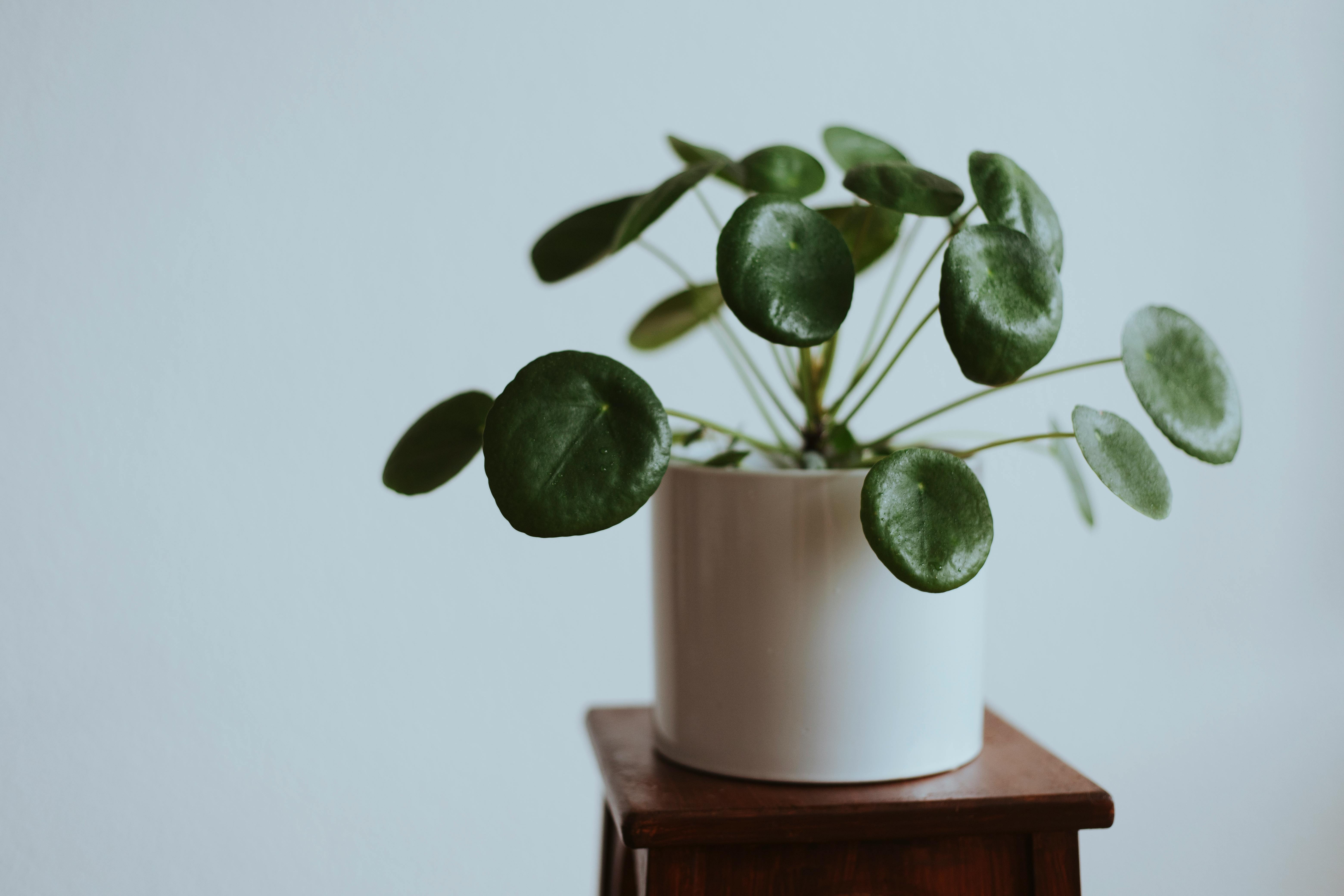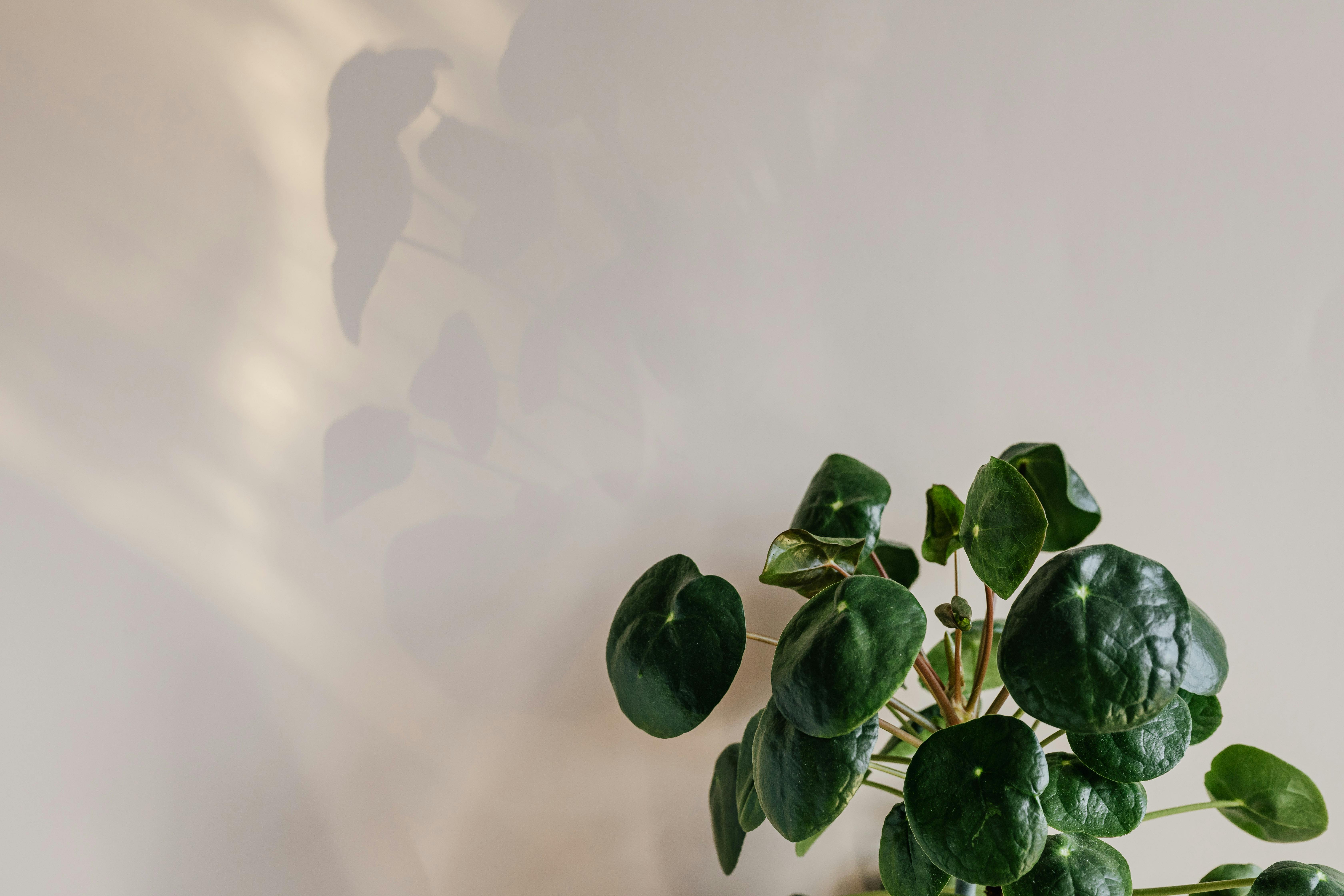Pilea Plant is a species of flowering plant in the Urticaceae family, native to Central and South America. It is a popular houseplant because of its attractive foliage and ease of care. Pilea Plants are easy to propagate and make excellent gifts for friends and family. They thrive in bright indirect light, like in east or west facing windows, and prefer to be watered regularly with a slightly moist soil. Pilea Plants are also low maintenance and can tolerate a range of temperatures from 65-85 degrees Fahrenheit. With the right care, these plants can reach heights up to 10 inches tall and live for several years indoors.A Pilea Plant is a species of flowering plant in the Urticaceae family. It is native to Central and South America, and it comes in many varieties. Pilea Plants are known for their bright green leaves and for being easy to care for. They require minimal sunlight, water, and fertilizer, making them a popular choice for indoor houseplants.
Contents
Appearance
Pilea plants are known for their vibrant green, round leaves. They typically have small, shallow root systems and can reach heights of up to 18 inches. The leaves are usually arranged in a circular shape and can range in size from 1 to 6 inches in diameter. Pilea plants come in a variety of shapes and sizes, including trailing varieties, upright varieties, and even miniature varieties.
Caring Requirements
Caring for a Pilea plant is relatively easy. They prefer bright indirect sunlight or partial shade and require weekly watering. Be sure to allow the soil to dry out between waterings. The soil should be moist but not soggy. Overwatering can cause root rot or other problems with the plant. Additionally, temperature should be kept between 65-75°F (18-24°C). Feed your Pilea every two weeks with a balanced liquid fertilizer during active growing season for best results.
Common Problems
Pilea plants are relatively low-maintenance but there are some common issues that may arise. The most common problems include leaf-spotting caused by overwatering or too little light, yellowing leaves due to too much direct sunlight, and wilting due to underwatering or too low temperatures. Additionally, pests such as aphids and mealybugs can be troublesome if not caught early on.
Propagation
Propagating Pilea plants is relatively easy and can be done by either stem cuttings or division of the plant’s roots. To propagate via stem cuttings, simply take a cutting from an existing stem that has at least two sets of leaves on it and place it in water until new roots form before transferring it into soil medium or potting mix. To propagate via division root system, simply divide the roots of an existing plant into multiple sections with at least one healthy stem per section before placing each section into its own potting mix or soil medium for growth.
Different Types of Pilea Plants
Pilea plants are a popular choice for houseplant enthusiasts, as many varieties thrive in low light and require very little maintenance. There are several types of Pilea plants that can be grown indoors, each offering unique foliage and texture. Some of the most popular varieties include the Chinese Money Plant (Pilea peperomioides), the Moon Valley Pilea (Pilea involucrata), and the Aluminum Plant (Pilea cadierei).
The Chinese Money Plant is an attractive and easy-to-care-for variety that features round, coin-shaped leaves. It grows quickly and responds well to pruning, making it an ideal choice for those looking to add some greenery to their home. The Moon Valley Pilea has a trailing habit and is known for its silvery-green foliage that resembles a crescent moon. It’s a great choice for hanging baskets or trailing pots.
The Aluminum Plant is a more unusual variety with large, dark green leaves with silver markings. Its foliage has a metallic sheen that gives it its name, and it’s very easy to care for. It does best in bright indirect light, but will tolerate lower light levels if needed. It’s also very forgiving if it’s not watered regularly.
No matter which variety you choose, Pilea plants make an excellent addition to any home or office space. With proper care, these plants can live for many years to come, adding color and texture to your living space. Whether you’re looking for something low-maintenance or something with more of an exotic flair, there’s sure to be a perfect pilea plant for you.
Light
Pilea plants thrive in bright, indirect sunlight. If kept in direct sunlight, the plant can become scorched. To prevent this, keep the plant away from windows with direct sunlight. It is best to place the Pilea in a spot that has indirect light throughout the day.
Temperature
The ideal temperature range for Pilea plants is between 65-75°F (18-24°C). It is important to keep the temperature consistent and avoid sudden changes that can shock or damage the plant.
Humidity
Pilea plants prefer high humidity levels and do best when humidity levels are kept between 40-60%. If you live in an area with low humidity or if your home has dry air due to heating or air conditioning, you may want to consider getting a humidifier for your Pilea plant.
Watering
It is important not to overwater your Pilea plant as it can lead to root rot. The soil should be allowed to dry out between waterings and should only be watered when the top inch of soil feels dry. Water thoroughly until water runs out of the bottom of the pot and then discard any excess water that collects in the tray.
Watering
Pilea plants need to be watered regularly, but not too much. The best way to tell if your plant needs water is to stick your finger about an inch into the soil. If it feels dry, it’s time to water. It’s important to make sure the soil drains well and that you don’t leave your Pilea sitting in water. Overwatering can cause root rot, so err on the side of caution.
Light
Pilea plants prefer bright, indirect light. Avoid direct sunlight, as it can cause scorching or burning of the leaves. If possible, provide a spot with bright light but no direct sun for your Pilea plant – like a windowsill that doesn’t get any direct sun during the day.
Humidity
Pileas are tropical plants and need a bit of extra humidity in order to thrive. If you’re growing them indoors, use a pebble tray or mist regularly with distilled water to help keep the humidity up around your plant.
Temperature
Your Pilea plant should be kept in an area with temperatures between 65-75°F (18-24°C). Avoid placing it near drafts or vents that could cause sudden temperature changes.
Fertilizing
Fertilize your Pilea every two weeks during its growing season (spring and summer) using a balanced liquid fertilizer diluted by half. During the winter months, fertilize once a month and stop fertilizing altogether when temperatures drop below 50°F (10°C).
Re-potting
Your Pilea may need to be re-potted every one to two years depending on how quickly it’s growing and how root bound it becomes in its pot. When re-potting, use a pot with good drainage and a light potting soil mix specifically designed for houseplants.<

Signs of Poorly-Cared for Pilea Plant
Pilea plants are beautiful, vibrant houseplants that thrive in bright indirect sunlight and moist soil. Unfortunately, if a Pilea is not cared for properly, it can suffer from various signs of distress. These can include yellowing leaves, stunted growth, leaf drop and wilting due to lack of water. Additionally, pests such as mealybugs and aphids may also be present in a poorly-cared for Pilea plant. These pests can cause further damage to the plant by sucking its sap and leaving behind a sticky residue. In order to prevent these signs of distress, it is important to provide your Pilea with adequate light and moisture as well as regular fertilization and pest control. If you notice any of the signs mentioned above, take immediate action to improve the conditions of your Pilea plant.
Overwatering
One of the most common problems with Pilea plants is overwatering. The soil should be allowed to dry out in between waterings, and it is important to make sure there are drainage holes in the pot to allow excess water to escape. Overwatering can lead to root rot, which can cause yellowing leaves and stunted growth. It is best to check the soil with your finger before watering and if it feels damp, wait until it has dried out before watering again.
Underwatering
On the other hand, underwatering can also be a problem for Pilea plants. If the plant does not receive enough water, it will become dry and wilted, causing the leaves to become crispy and yellow. It is important to ensure that the soil stays evenly moist at all times by providing regular waterings when needed.
Too Little Light
Pilea plants prefer bright indirect light, but too little light can be a problem as well. If your plant does not receive enough light, it may become leggy and weak as it stretches for light. Make sure your plant has access to bright indirect light for most of the day in order to keep it looking its best.
Pests
Pest infestations can also be a problem for Pilea plants. Aphids, mealybugs and spider mites are some of the most common pests that may affect your plant. These pests feed on the sap of the plant, causing yellowing leaves or stunted growth. It is important to regularly inspect your plant for any signs of pests and take action if necessary by either using insecticidal soap or neem oil spray.
Health Benefits of Having a Pilea Plant
Having a Pilea plant in your home can bring many health benefits. Not only is it aesthetically pleasing, but it can also help to improve the overall air quality in your home. Pilea plants are known for their ability to absorb airborne toxins, such as formaldehyde and benzene, which can be found in many household items such as furniture, carpets and paint. In addition, they can also help to reduce levels of dust and pollen in the air, which can be beneficial for those with allergies or asthma.
Other health benefits of having a Pilea plant include improved mental health. Studies have shown that spending time around plants can reduce stress levels and improve moods. The presence of plants has also been linked to improved concentration and productivity, making them an ideal choice for work or study areas.
Finally, having a Pilea plant in your home may even help to improve sleep. Being around plants before bedtime has been linked with improved sleep quality due to their calming effects. The presence of plants may also help to reduce noise levels in the bedroom, resulting in better restful sleep.
In conclusion, there are many health benefits associated with having a Pilea plant in your home. Not only do they help to purify the air by removing toxins and allergens from the environment, but they can also improve mental health and even help you get a better night’s sleep.

Conclusion
Pilea Plant is a great addition to any home or office. Its attractive foliage and vibrant colors make it an ideal choice for indoor décor. It also has the added benefit of purifying the air, making it a win-win situation for both you and your environment. Pilea Plants are easy to care for, requiring minimal effort and maintenance. With proper watering and fertilization, your Pilea Plant should last for years to come.
Overall, Pilea Plant is an excellent choice for anyone looking to add a touch of green to their home or office. Its low-maintenance requirements and air-purifying benefits make it a worthwhile investment that will continue to bring joy for years to come.

0 Comments